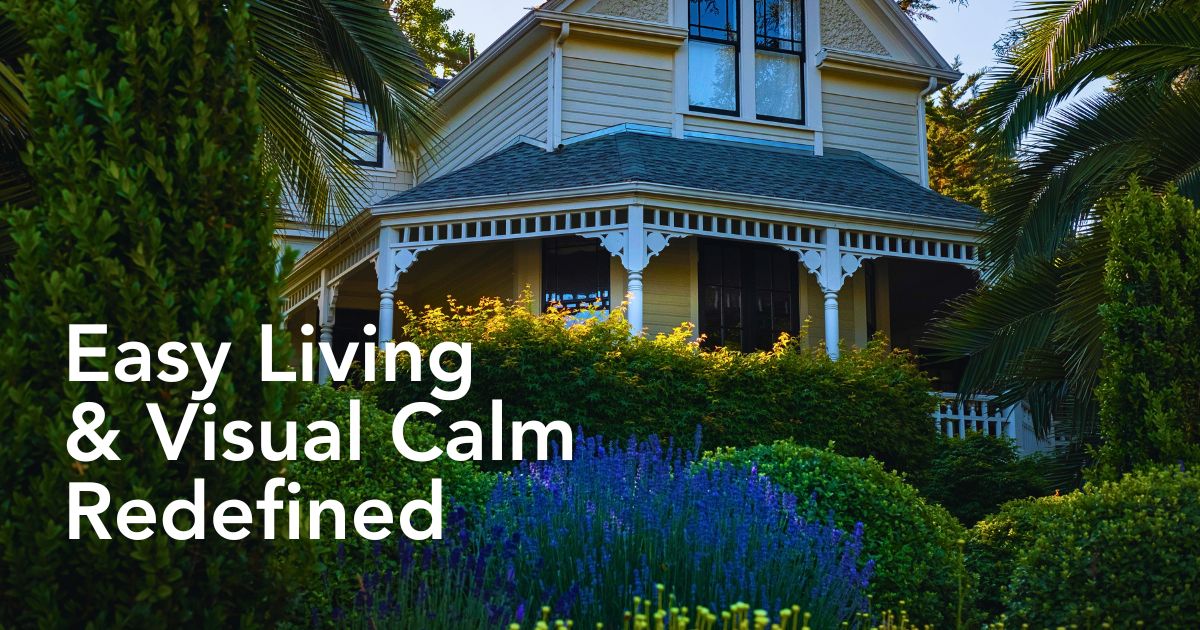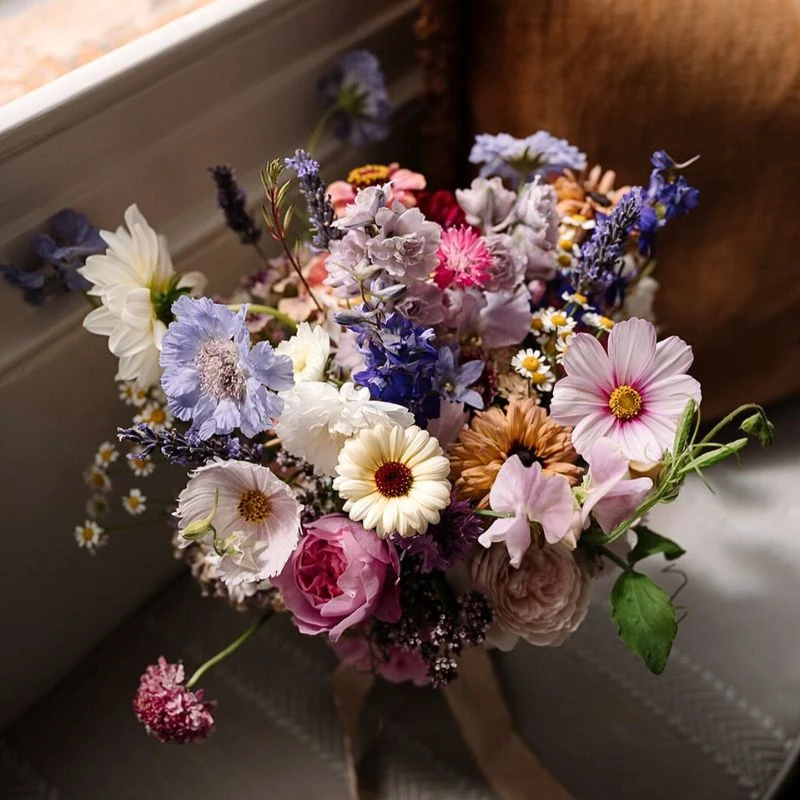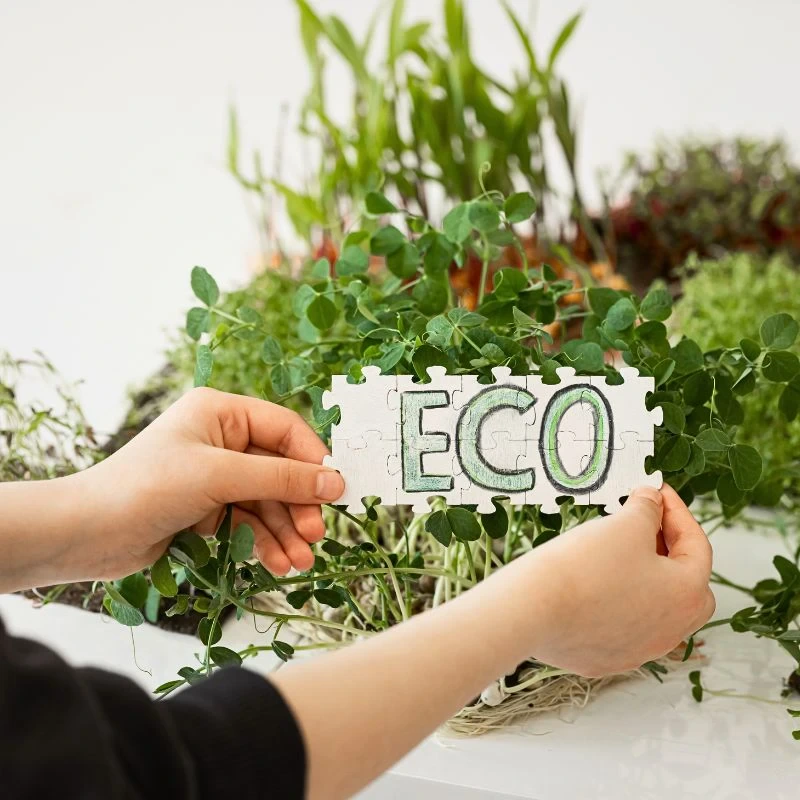Picture this: stepping out of your back or front door into a garden that sends calmness to the mind, energizes the body, and connects you with nature in the most beautiful way possible. Certainly, these are contemporary gardens. And they are reimagining how and what people think about outdoor spaces. They are gardens that revamp simple yards into serene spaces that perfectly serve modern lifestyles while nurturing both human well-being and the environment.
Rather than being just patches of grass or beds of flowers, they are purposeful, peaceful retreats that faultlessly match the incessantly hyperactive living of the contemporary world, as well as human sensibilities. You could say they are not just gardens, but rather extensions of the living spaces that blend seamlessly with homes, in turn, building a kind of harmony between indoor comfort and outdoor beauty.
What Makes a Garden Contemporary?
Unlike classical or cottage green spaces, contemporary gardens are defined less by their plant list and more by their design values. If you picture a space that feels as attentively designed as a modern living room, then you’re on the right track. Contemporary landscapes thrive on clean lines, geometric structure, and a certain visual calm. Think raised beds built from weathered steel, hardwood, or composite decks, or expanses of porcelain or concrete paving bordered by bold, architectural plants, and more.
But it’s not just about looks. Contemporary gardens are made for easy living. Every inch counts—paths are designed for smooth flow, seating is integrated into the layout, and the whole garden often reads as an extension of the home’s interior, sometimes with large glass doors or similar flooring to blur the indoor-outdoor divide.
Color in these spaces tends to be restrained. Rather than a variety of flamboyant flowers and plants, you might find cool greens, silvers, and maybe one or two bold accent colors. Lighting is another key aspect; subtle, well-placed lights can make a contemporary garden look and feel quite like a magical evening retreat. Perhaps best of all, these streamlined spaces are typically straightforward to maintain. With fewer plant varieties, more evergreen structure, and a focus on quality over quantity, one can enjoy more beauty with less effort.
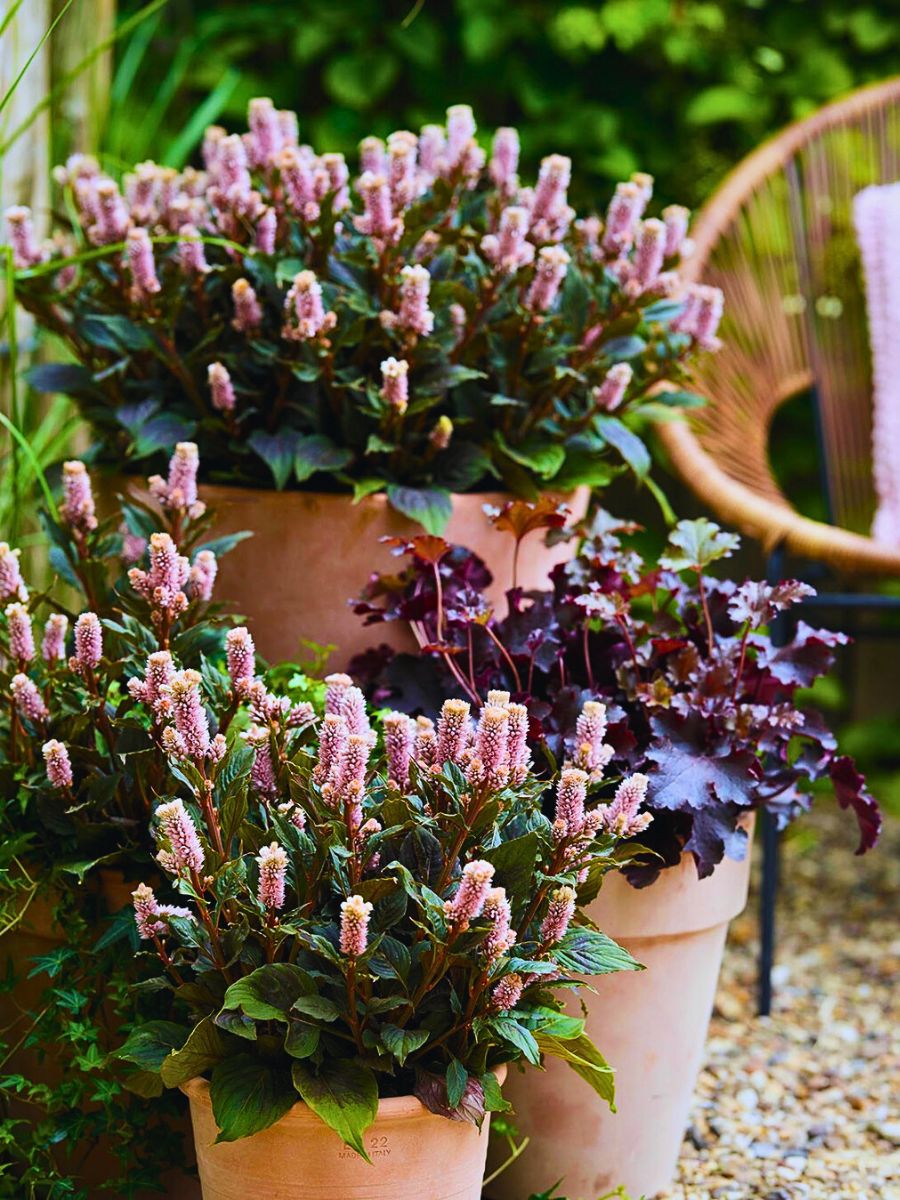
Plants and Flowers That Shine in These Modern Gardens
Choosing the right plants for a contemporary garden is a little different from old-fashioned flower border planning. You’re not aiming for riotous cottage color or wild profusion. Instead, you’re curating elements like shapes, textures, and foliage that bring structure and interest, not just seasonally, but throughout the year.
Simply put, selecting the right plants for a contemporary garden requires a shift in thinking from traditional gardening approaches. Instead of seeking the most colorful or exotic specimens, this garden design prioritizes flowers and plants with strong architectural qualities, interesting forms, and the ability to maintain their structure throughout the seasons.
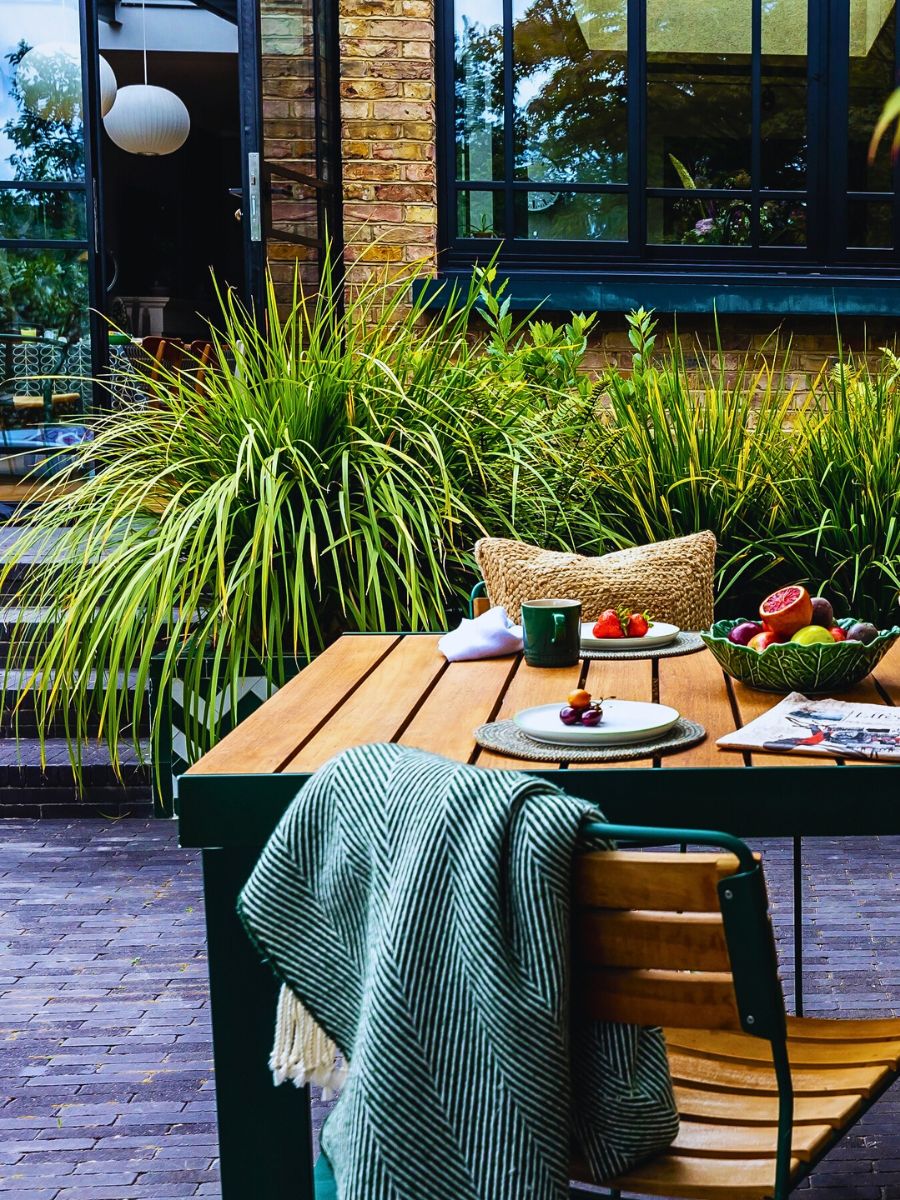
Ornamental grasses are a favorite in these modern gardens. Species like feather reed grass, fountain grass, or the wispy Mexican feather grass provide movement and softness against sleek hardscaping. Their feathery plumes add drama, especially when planted in bold swathes or grids, and their muted tones suit modern color schemes impeccably.
Sculptural perennials and bold evergreens make excellent focal points. Agave and yucca offer futuristic spikey forms, while smaller succulents like sedum and Echeveria work well in pots or as groundcovers. Boxwood clipped into cubes or spheres, architectural bamboos, and upright privet offer strong verticals and crisp edges—useful where you want to mark out a space or set off a pathway.
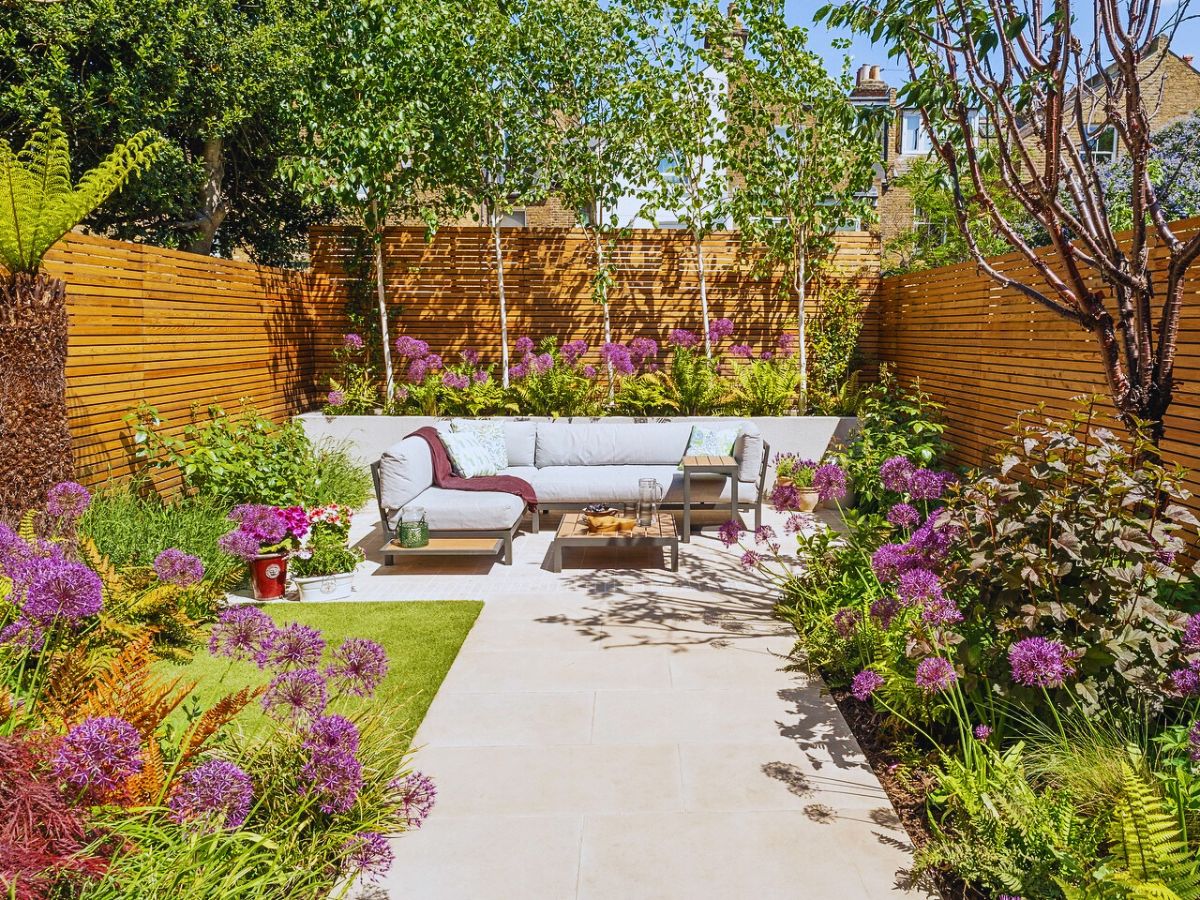
When it comes to flowers, the best approach is restraint. Alliums bring spherical, purple flower heads that echo geometric themes. Agapanthus sends up elegant blue or white umbels above strappy leaves, while hardy perennials like Echinacea or Rudbeckia add just enough color without dominating the space.
Most importantly to note is that one should focus on plants and flowers that thrive in their local climate and soil conditions. Many contemporary gardens incorporate native species, which means less water and easier growing, and they can be arranged in repeated, rhythmic plantings that tie the whole space together.
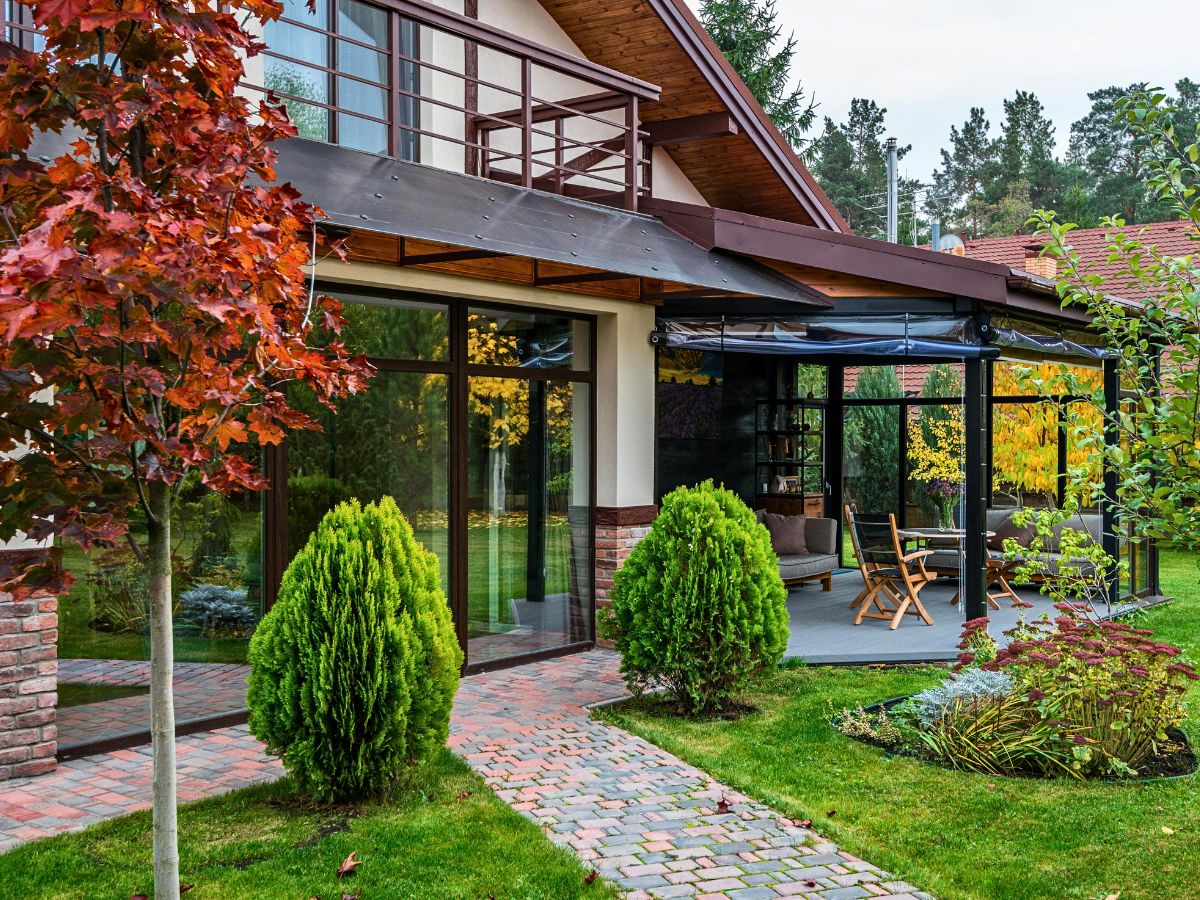
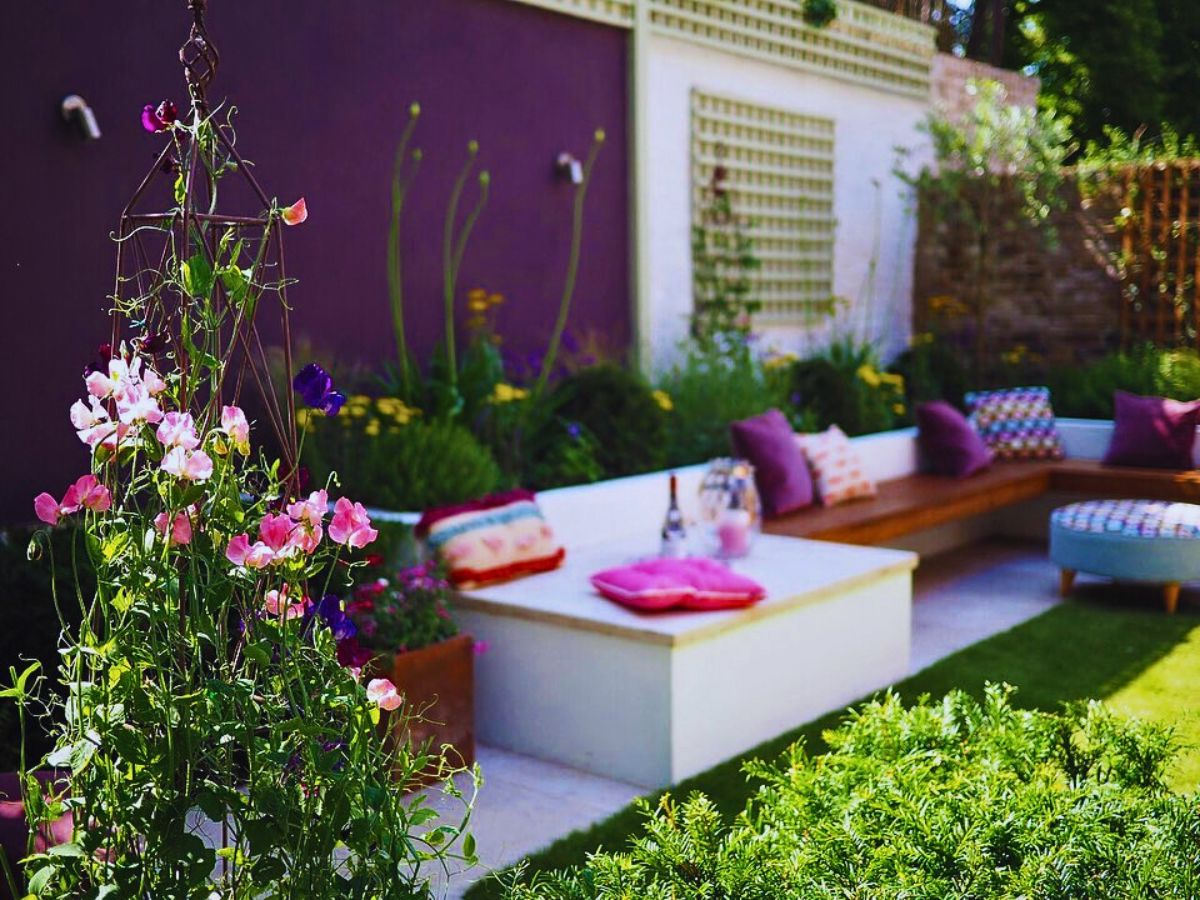
What Are Their Benefits for People and the Planet?
Contemporary gardens offer so much more than just good looks. Well-planned modern gardens support both well-being and the local environment, making them a win-win choice for the 21st-century gardener. Perhaps, we could focus on people first. Spending time in green spaces, even just a small garden, is proven to boost your mood, lower stress, and help with symptoms of anxiety and depression.
The uncluttered design of modern gardens particularly helps if your mind feels busy or overwhelmed; the clean lines and serenity invite calm. These gardens are made for savoring—a morning coffee on a designer bench, dinner with friends under easy outdoor lighting, or just a quiet moment with a good book in the fresh air. Gardening as an activity brings its own rewards, from physical movement to creative satisfaction. There is just so much healing power as well to these gardens!
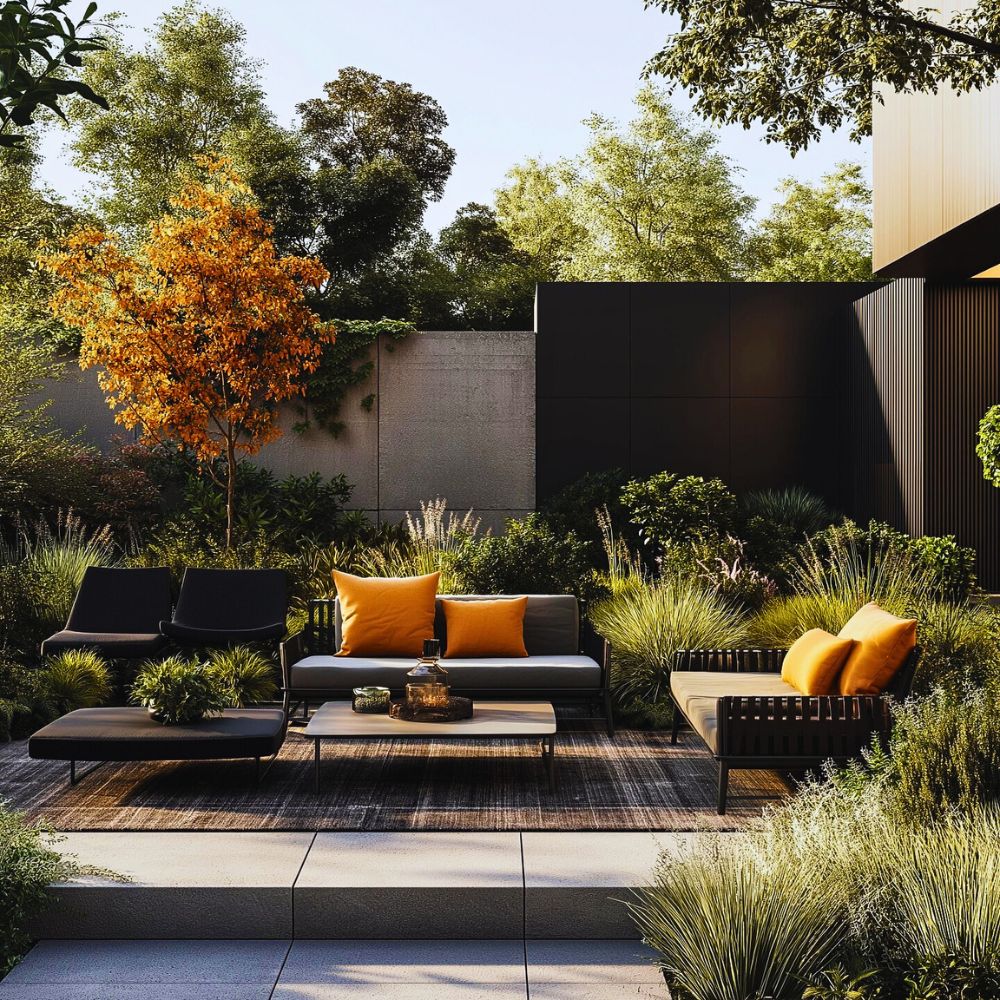
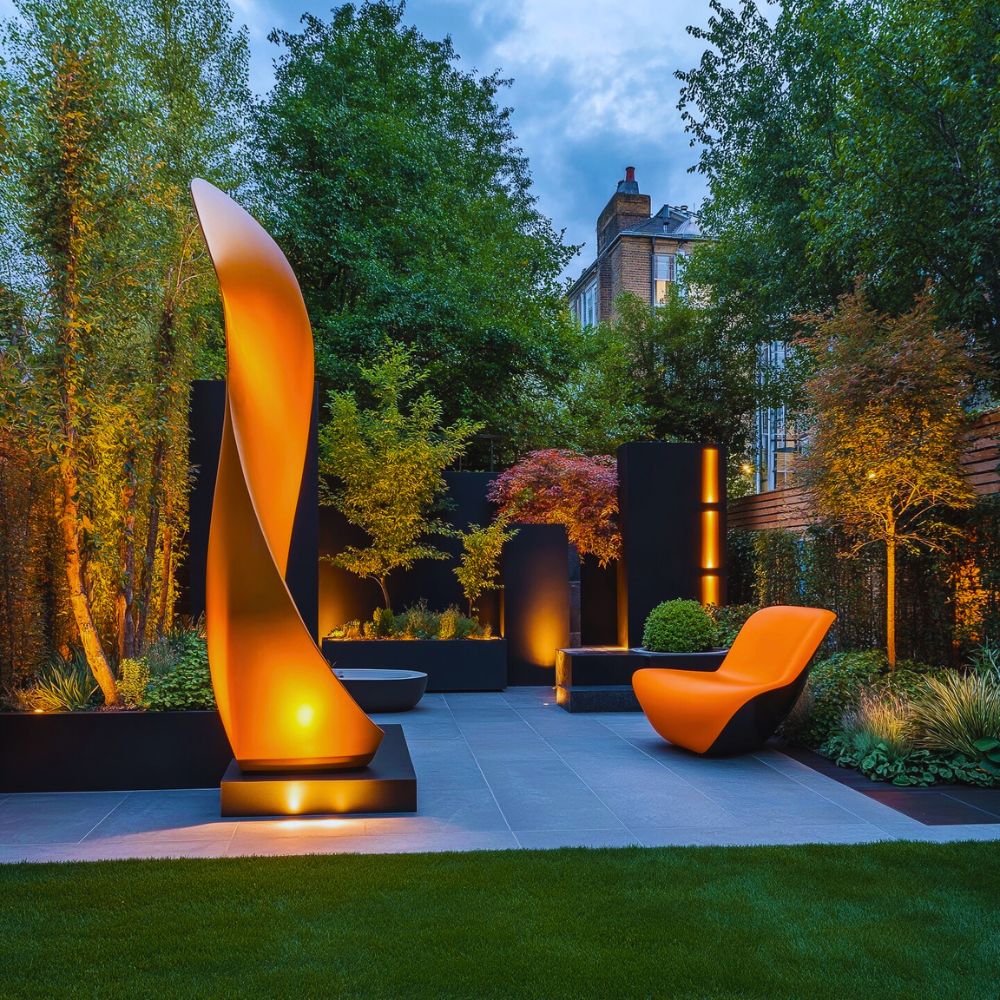
Environmentally, contemporary gardens tick a lot of green boxes. The emphasis on hardy, drought-resistant planting means less need for irrigation, helping to conserve water resources. Native and pollinator-friendly plants invite bees, butterflies, and birds—a real boost for urban biodiversity. Large shrubs and trees capture carbon, filter air pollutants, and offer cool shade that lowers the need for indoor air conditioning.
Modern paving and decking materials can be permeable, allowing rainwater to soak in and reducing the risk of flooding. Sustainable materials like reclaimed wood, recycled plastics, or responsibly sourced stone are increasingly popular for both hard landscaping and outdoor furniture. Even lighting can be eco-friendly, using low-energy LEDs or solar power to extend the delight of your garden into the late evening hours.
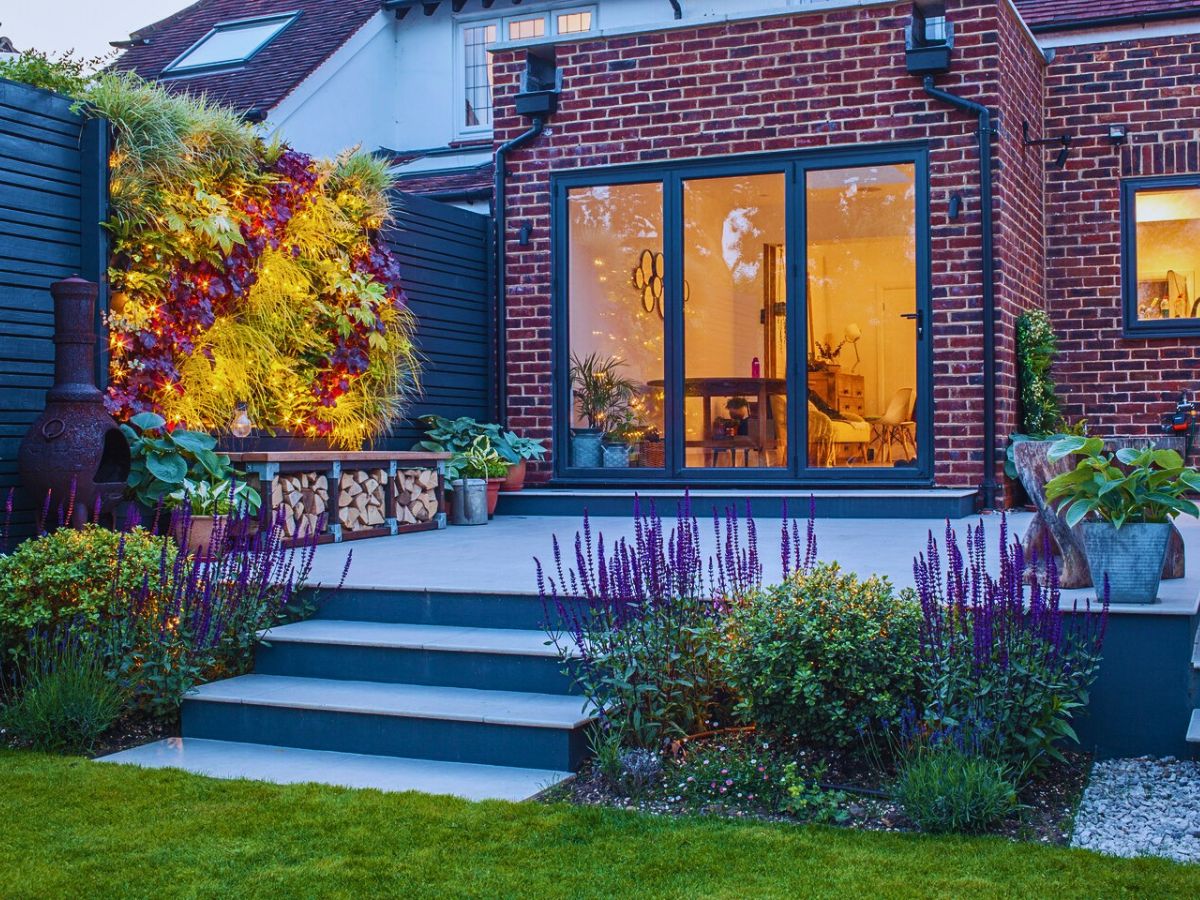
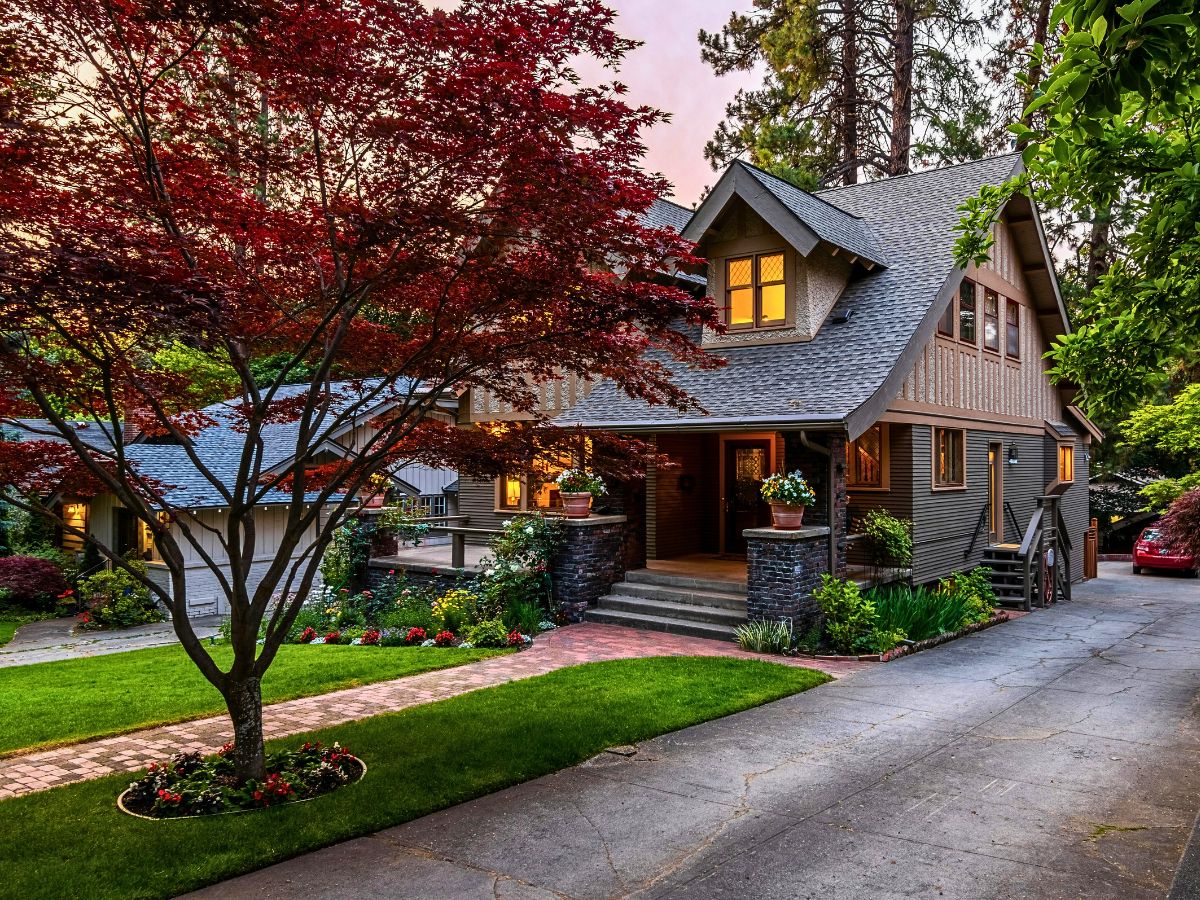
How Can You Create a Contemporary Garden?
Feeling inspired? If so, designing your own contemporary garden is easier and more exciting than you might think. It hardly matters whether you’ve got a sprawling lawn or the tiniest courtyard; the principles remain the same. Start with a clear plan. Take account of your space: how the light falls, which spots are most sheltered or exposed, and how you want to use each area. Do you crave a sunny breakfast terrace, a kids’ play zone, somewhere for an evening glass of wine? Sketch these wishes on a simple site map.
Next, think structure. Use hard landscaping to set the tone and layout—this could be a grid of paving slabs, a deck that matches your indoor flooring, or raised beds in crisp geometric shapes. Pathways should be direct and practical, inviting easy flow. Materials matter. Stick to a palette that complements your house—perhaps grey porcelain tiles, light timber, and brushed steel planters. Embrace the beauty of contrasts: cool stone beside lush planting, glossy leaves against a matte fence, or strong lines offset by gentle curves in the garden layout.
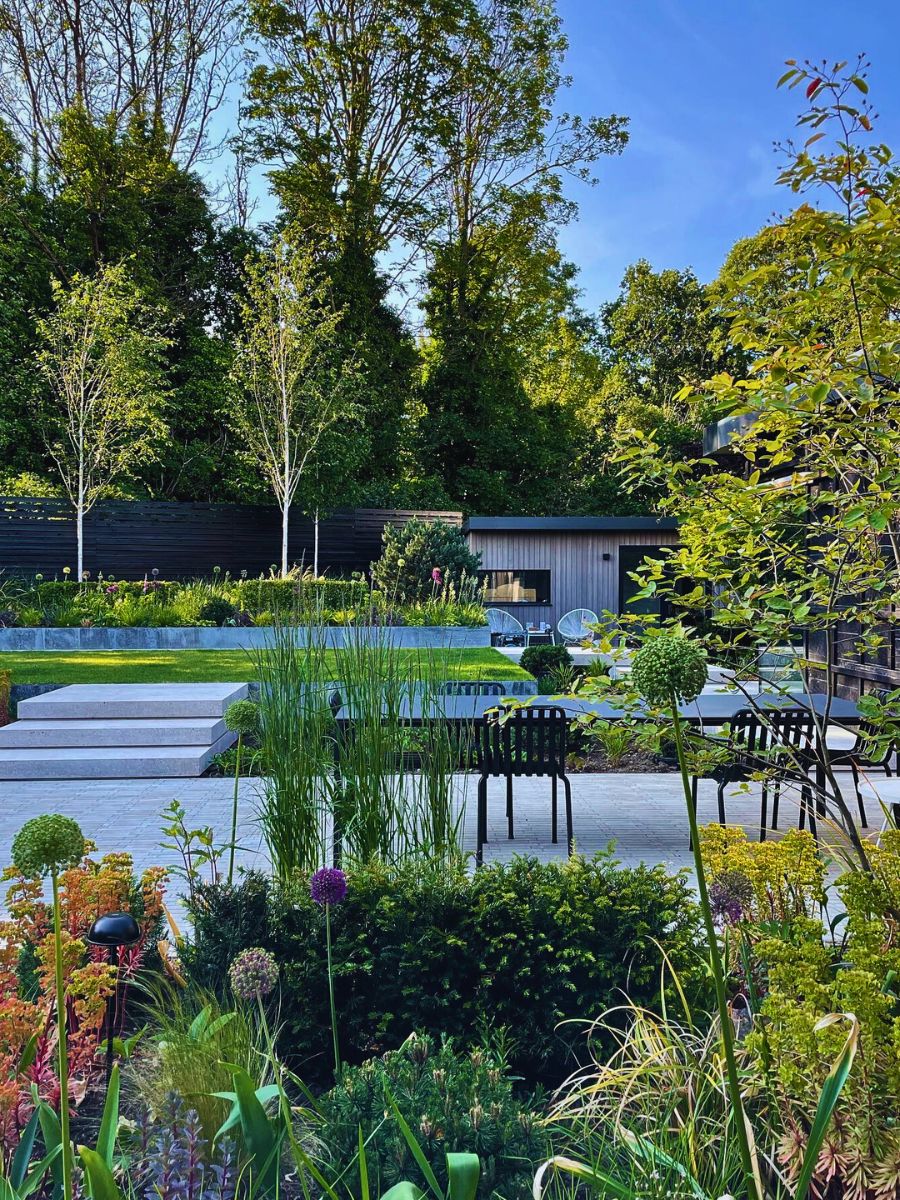
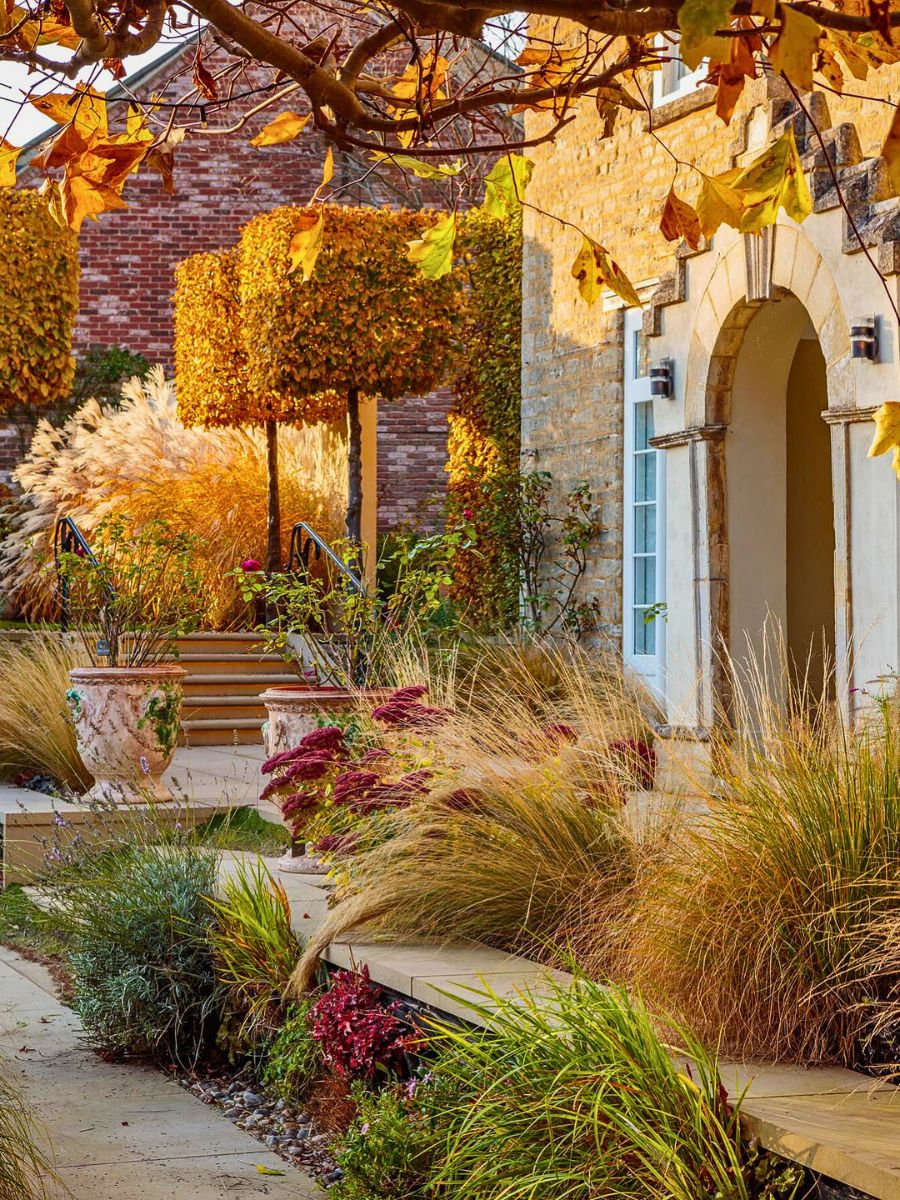
Now the planting. Choose a limited range of structural plants and repeat them in groups for impact. Space out your ornamental grasses, sculptural shrubs, and a few dramatic perennials. Edging plants with contrasting foliage colors—blues, silvers, or deep greens—can really make each area stand out. Add interest with statement pieces. This could be a single large pot, a water feature, or a low wall that doubles as seating. Invest in weatherproof, minimalist furniture, and don’t forget some outdoor lighting—try fitting spots along key pathways, uplighting your favorite tree, or hanging subtle string lights over your entertainment area.
Finally, make it low-maintenance. Opt for mulch to keep weeds at bay, set up an efficient drip irrigation system, and use more perennial plants that require less fuss. Even if your space is tiny, a few well-chosen pots and a neat table can create a sense of curated calm characteristic of the contemporary garden idea.
Bringing It All Together
One could perceive a contemporary garden as more than just a trend—you could call it a lifestyle choice. One that brings lightness, clarity, and health to the mind… and the planet by extension. It is evidence that less really can be more, trading clutter for calm, and fuss for genuinely satisfying simplicity. These gardens usher you out into the fresh air. They ground you in the present. They invite birds, insects, and the shimmer of sunlight right to your doorstep.
Still, these gardens turn gloomy and dull backyards, patios, and balconies into thriving and lively outdoor living rooms, providing spaces where one can recharge, gather with friends, support nature, biodiversity, and wildlife, and express their distinctive personal style. Best of all, their beauty comes without the burden of endless upkeep.
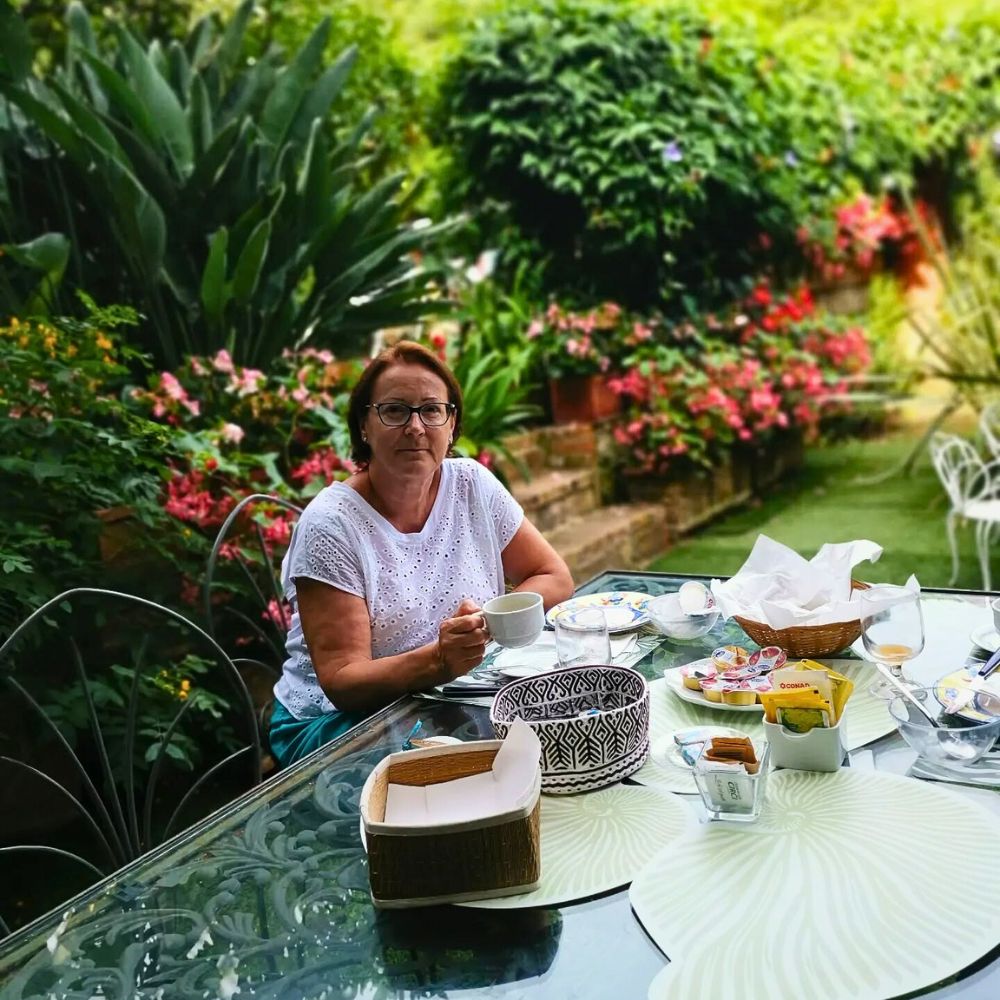
So, if you’re keen on a new way of living outdoors—a way that is all about enhancing clarity, creativity, and connection—then a contemporary garden could be the perfect next step for your home. Plant those first grasses, set that stepping stone, and see how this contemporary design changes not just your garden, but your whole home experience.
Feature image by @royalvanzanten. Header image by David McElwee. Video by @our60srevamp & @lucywillcox.

